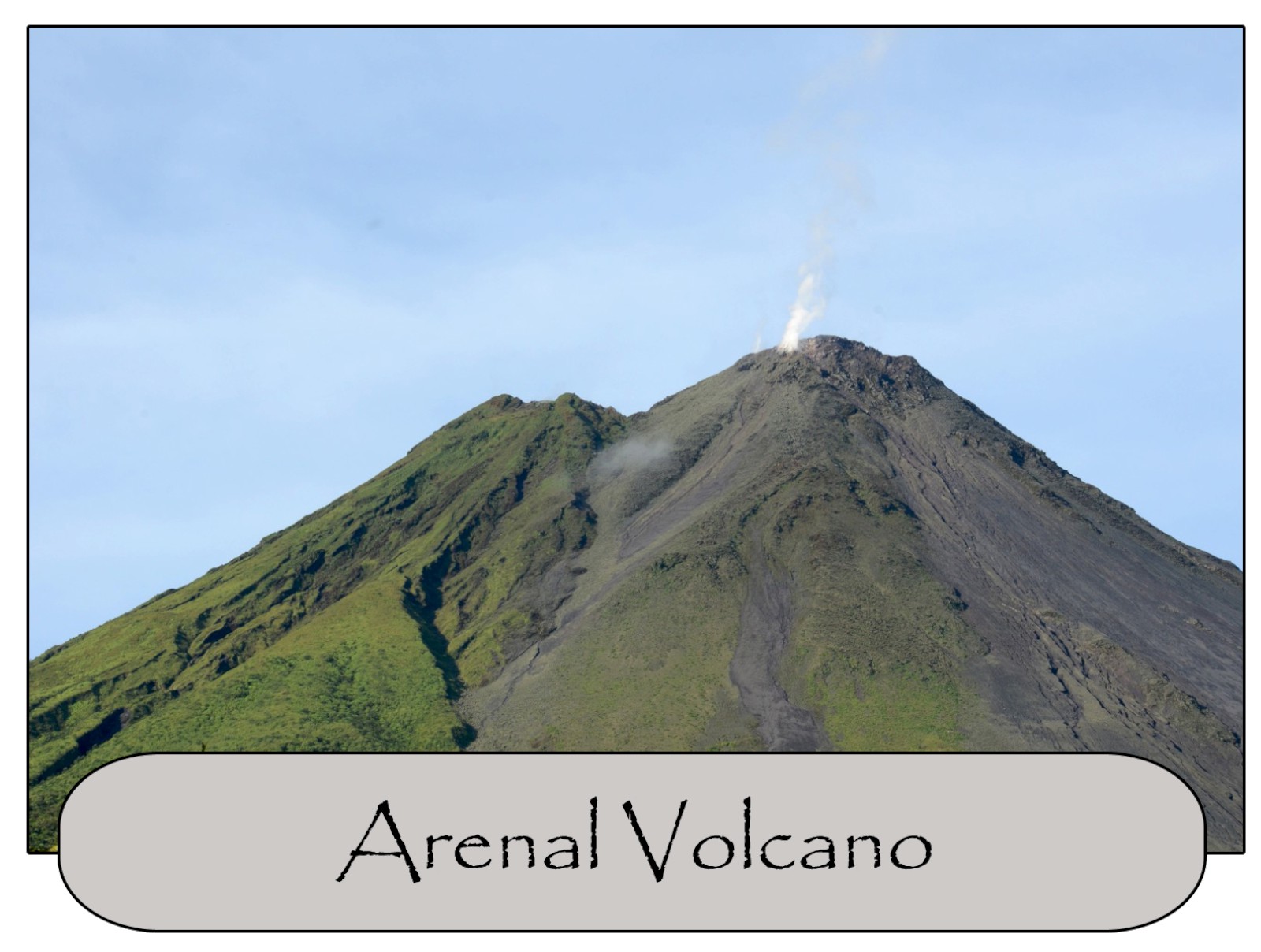My first interest in seeing La Soufriere Volcano was seeing a photo of the volcano crater. It was one of the most beautiful landscapes that I had seen and I immediately started looking into taking a trip to the island of St. Vincent. A month later I was standing on the beach in front of the volcano getting ready to make the hike to the top of the volcano and see the spectacular landscape of the La Soufriere volcano crater.
La Soufriere volcano is located on the northern part of the island and is one of 19 active volcanoes located in the Lesser Antilles on the eastern edge of the Caribbean. The volcano rises from sea level to a height of 4,048 feet with a 1.6 kilometer wide rim at the summit and a 500 meter wide crater that is 60 meters deep.
La Soufriere is one of the most active volcanoes in the Lesser Antilles and has a history of eruptions with the historical records showing eruptions in 1718, 1812, 1814, 1902, 1971 and 1979.
Starting the ascent
The hike to the summit started along the beach for a short distance before entering a slot canyon and then ascending up the side of the volcano. The two photos below are as we entered the slot canyon.
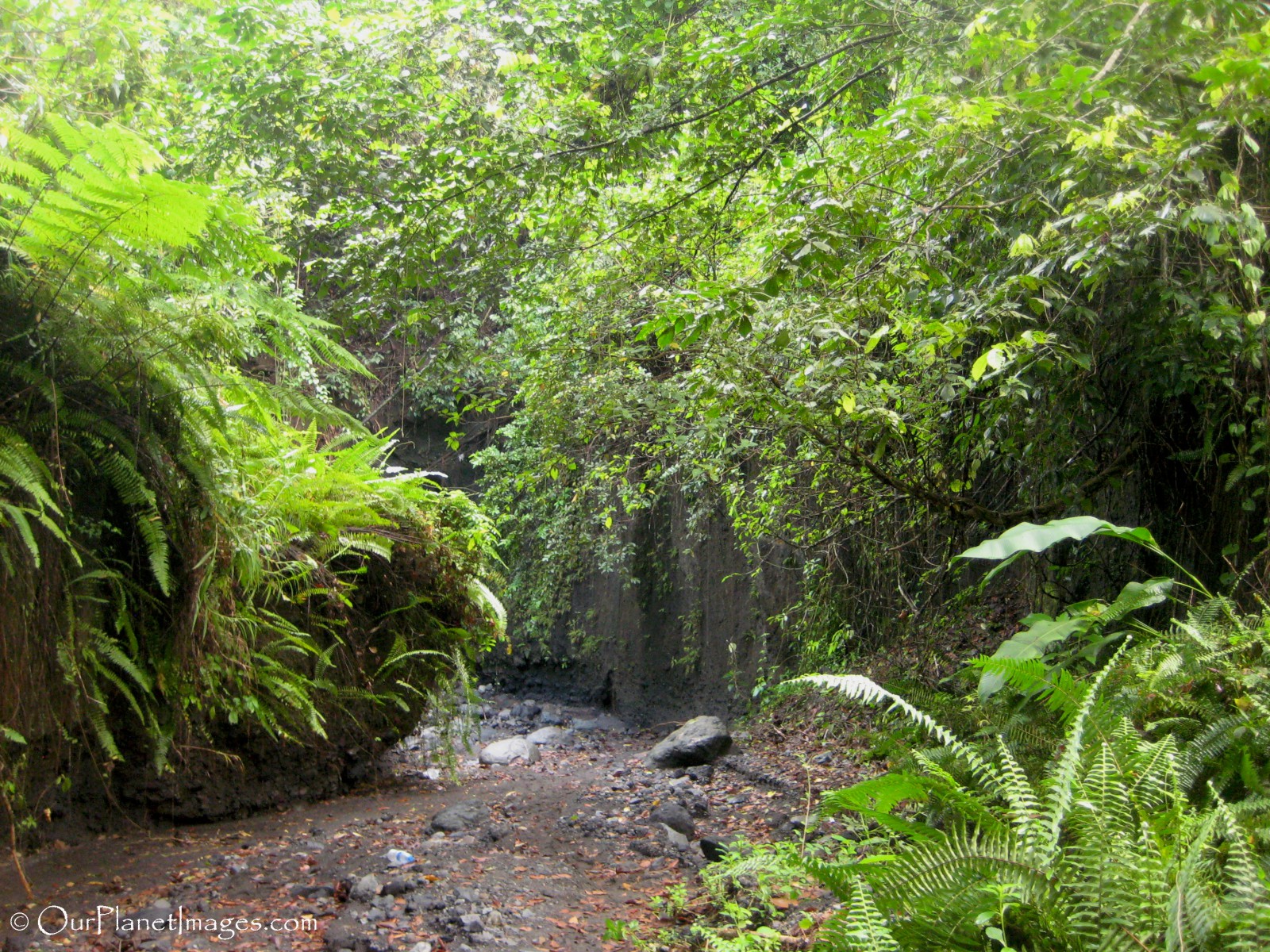
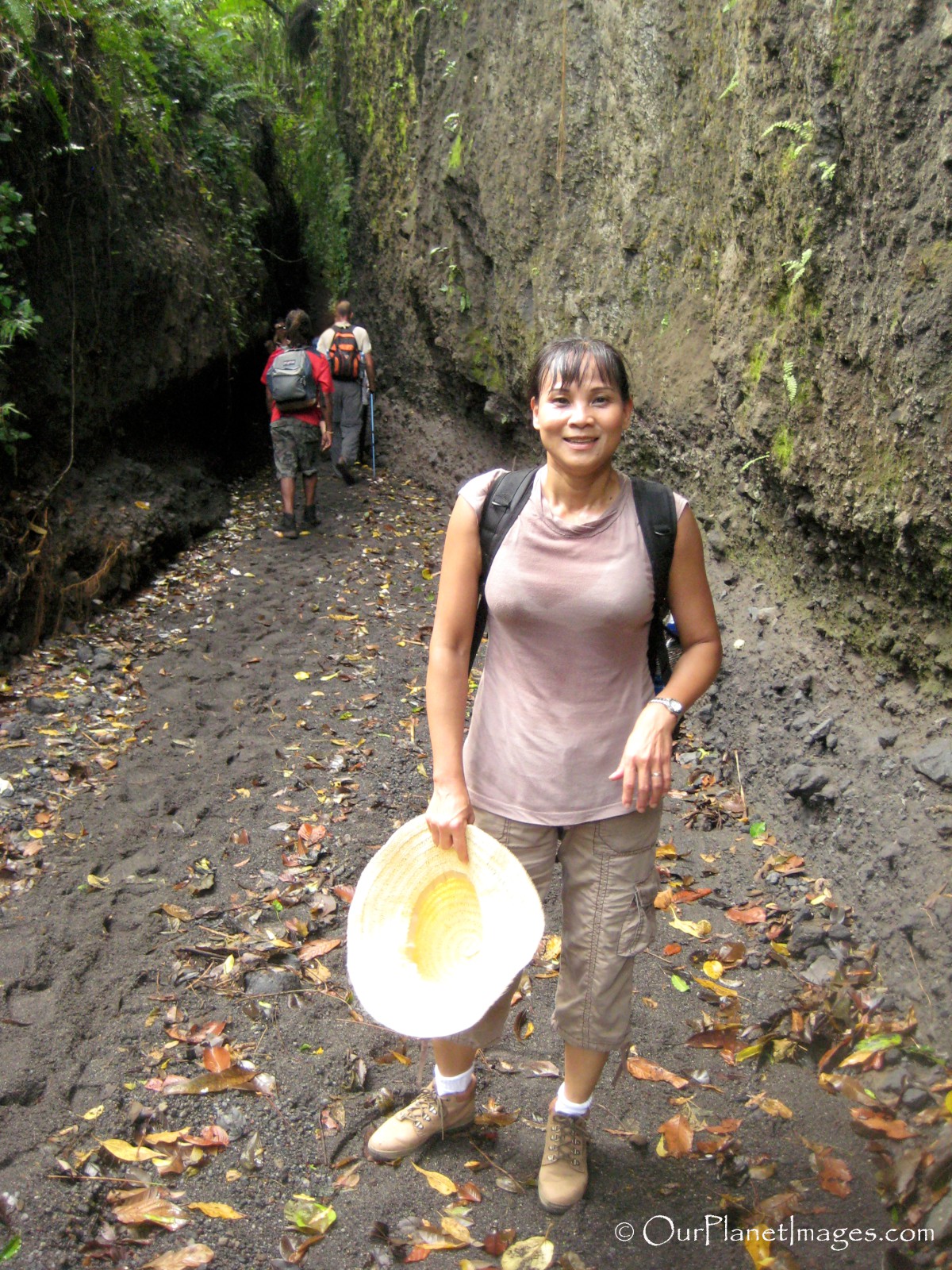
View from the trail
The view on the hike up the volcano was absolutely beautiful. Many places the trail was on the mountain ridge with views on both sides of the trail. One side was an ocean view looking over the tropical jungle and the other side was mountain views with clouds passing over the mountain tops.
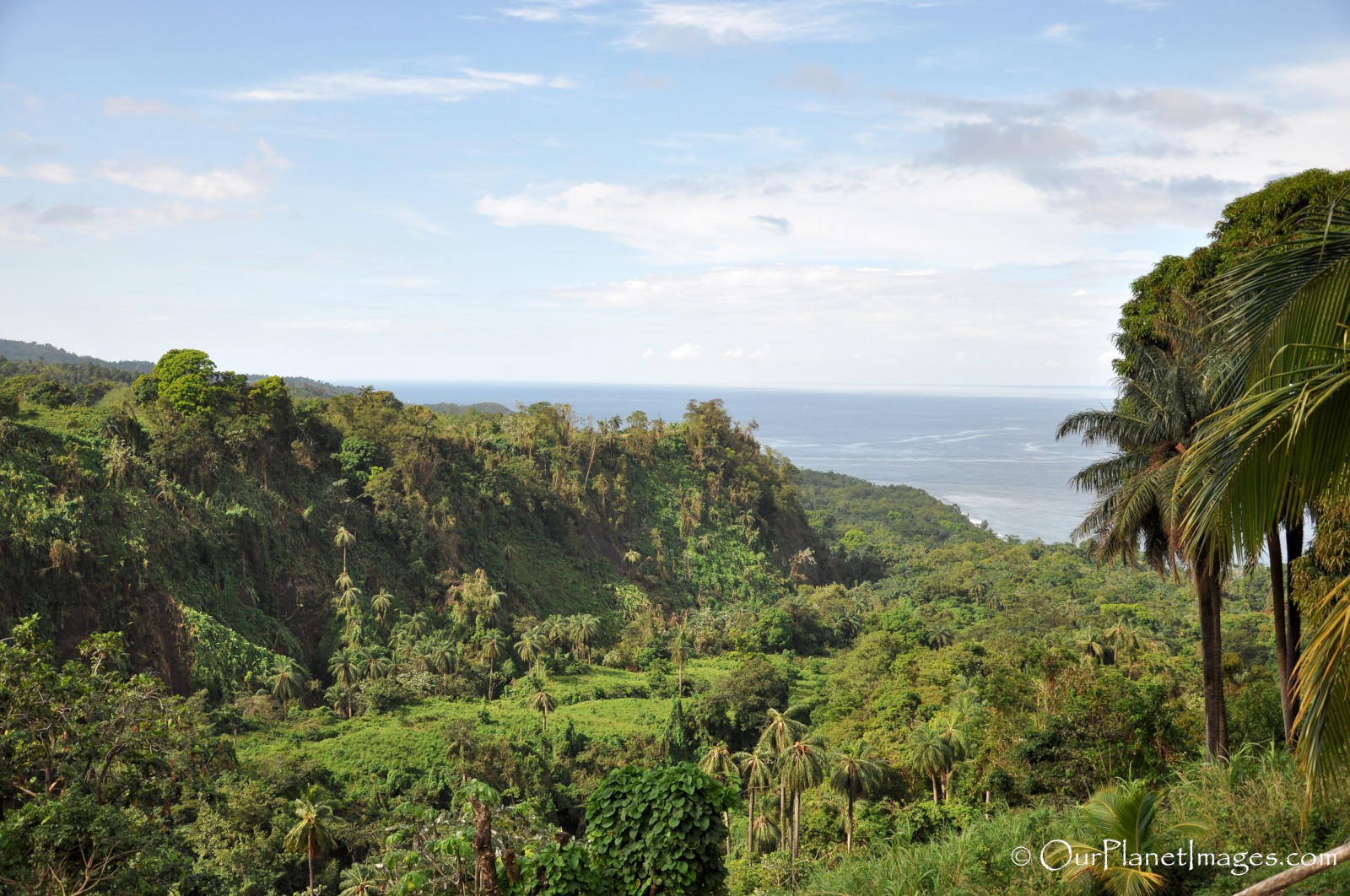
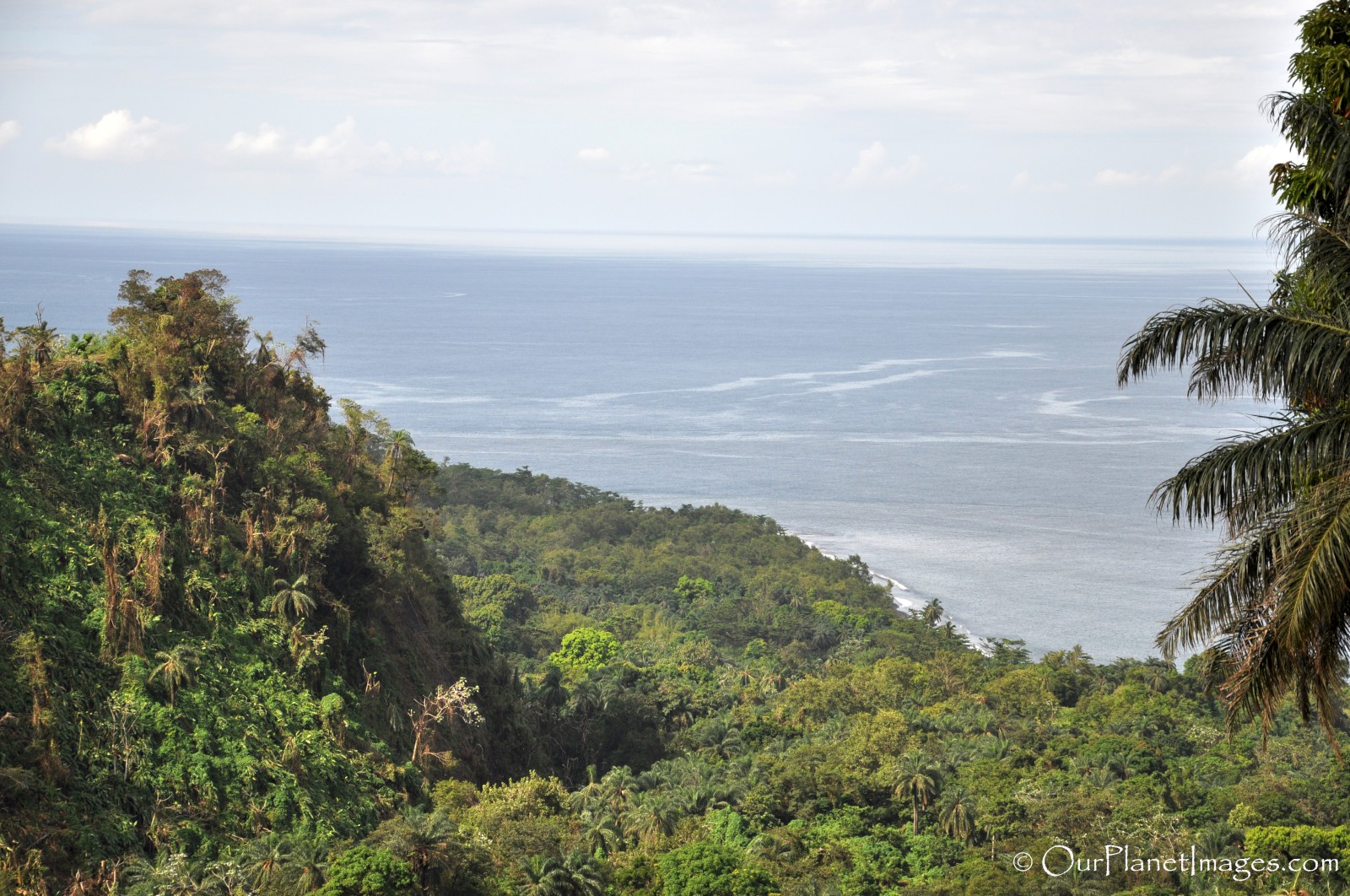
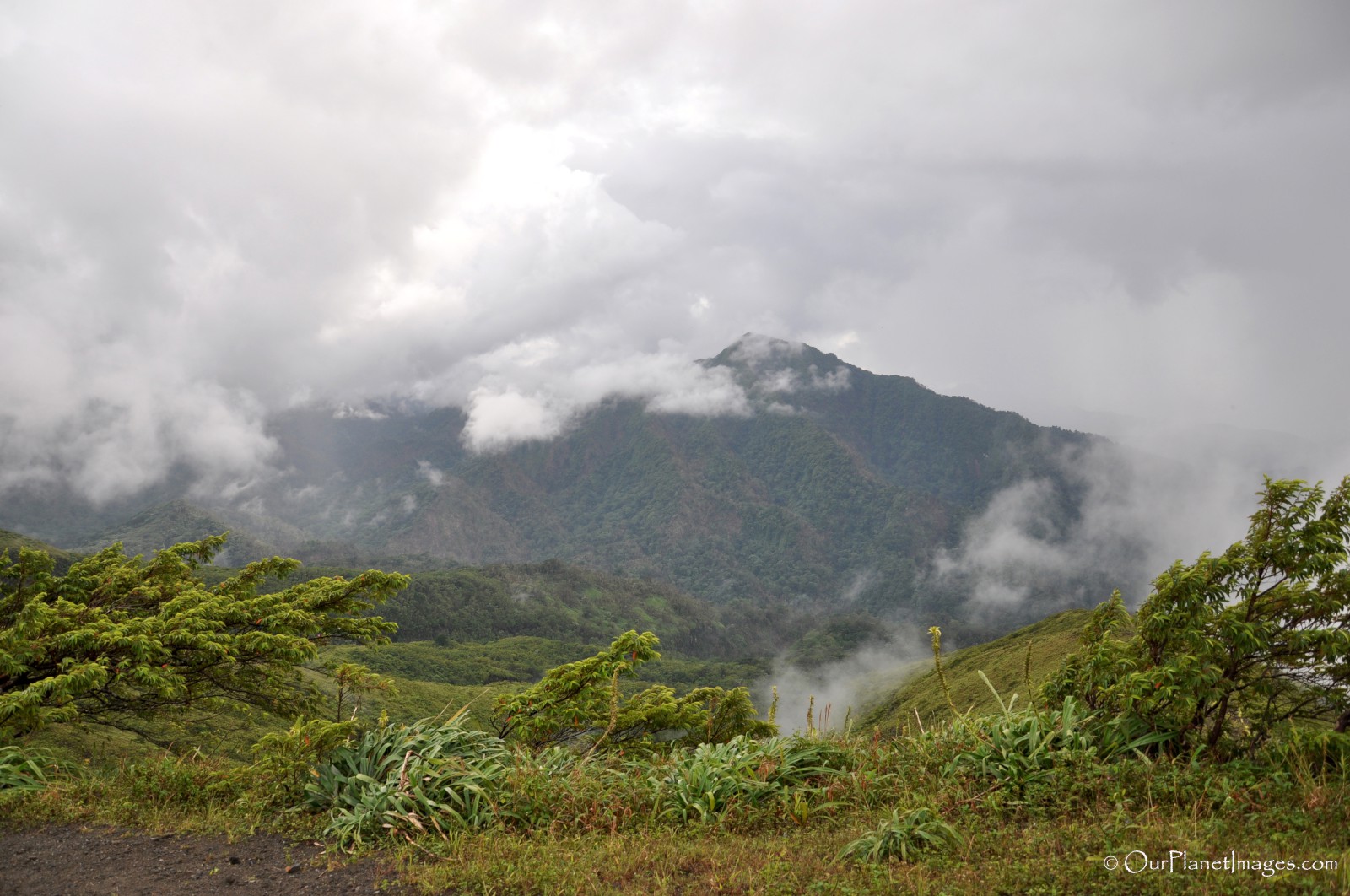
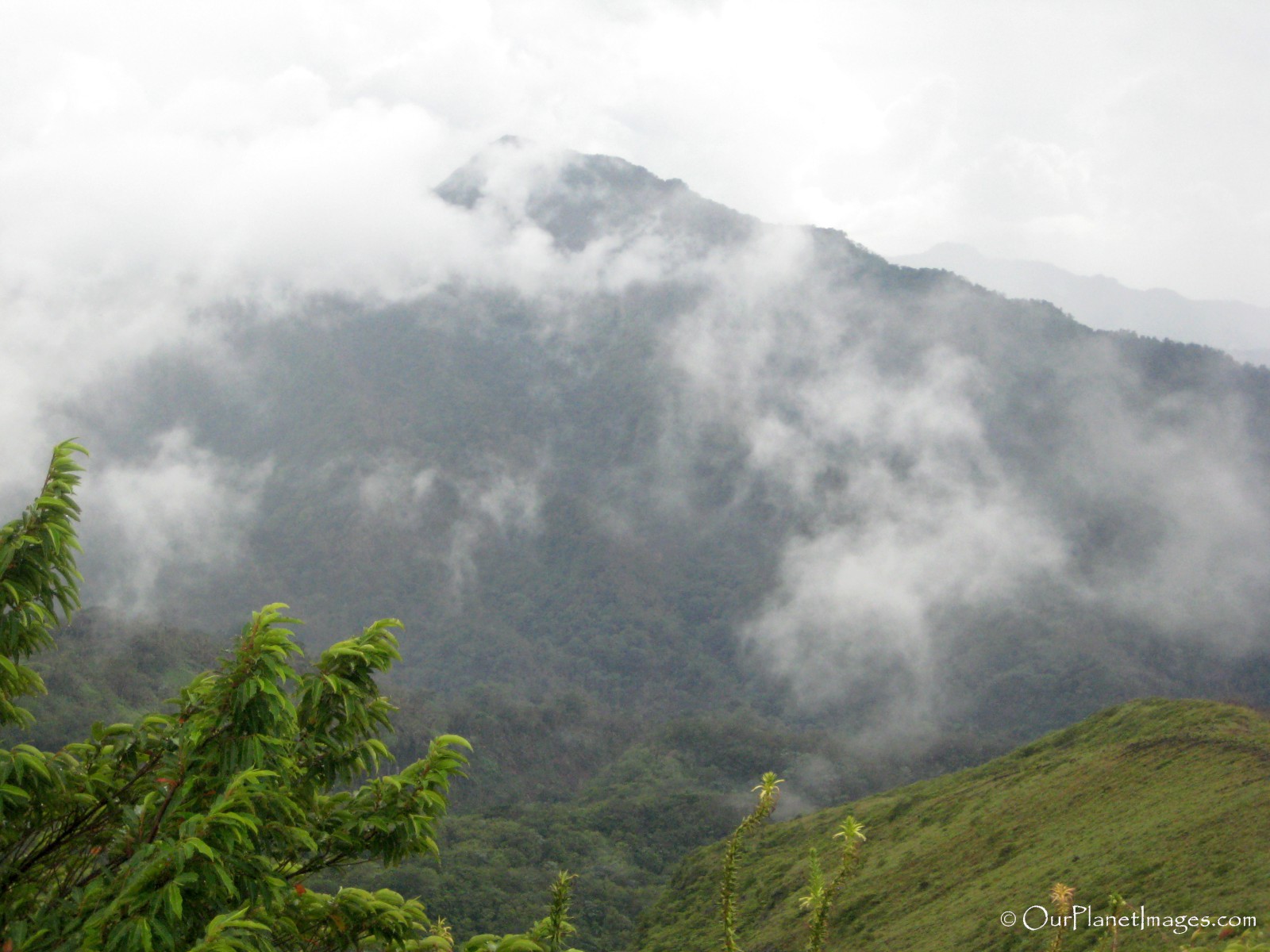
Halfway point
The total hike up the volcano was supposed to take three hours. After two hours our guide informed us that we had reached the halfway point. We thought he was kidding until he pointed to the sign that said “La Soufriere Trail Half Way Point.”
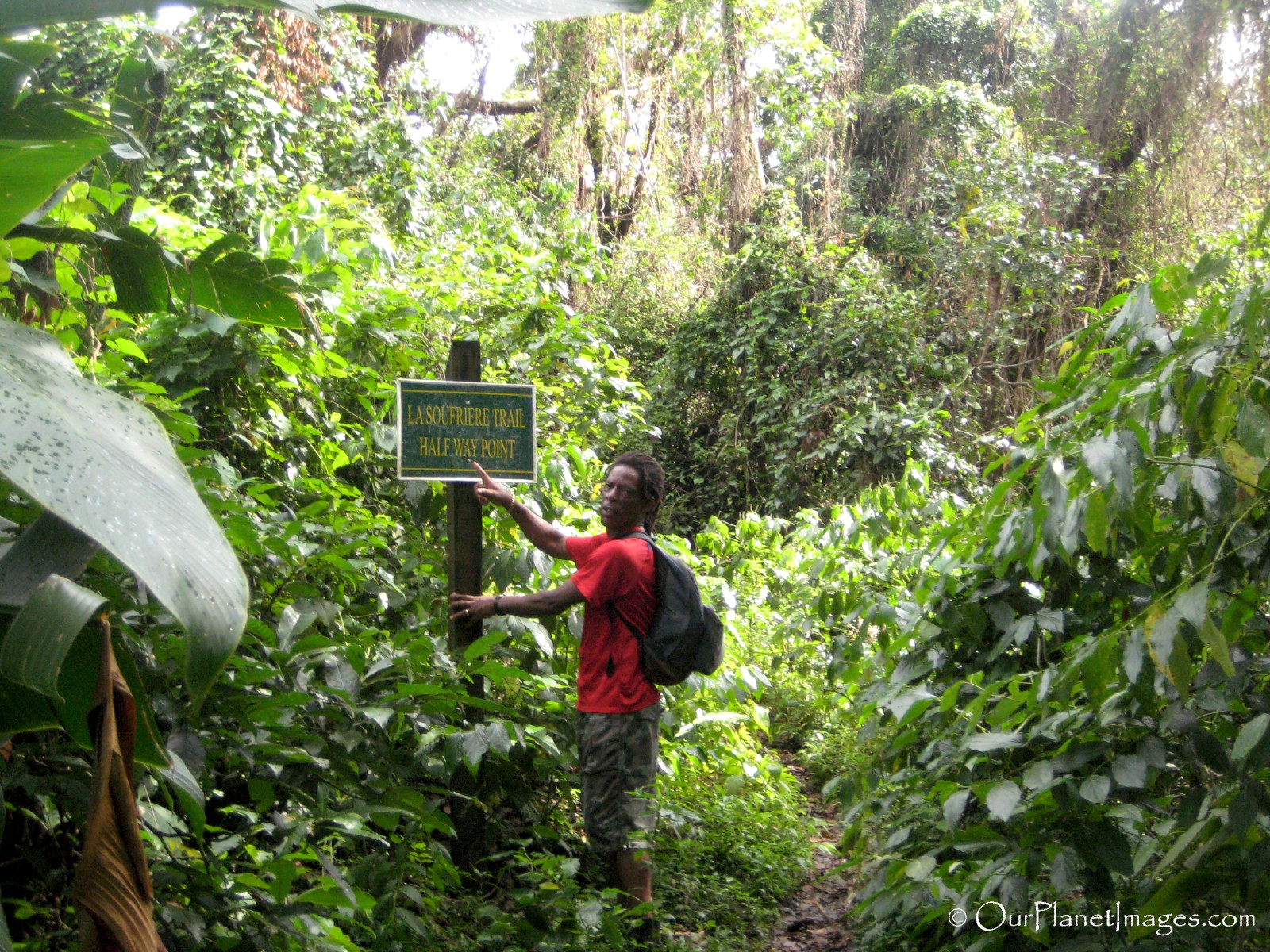
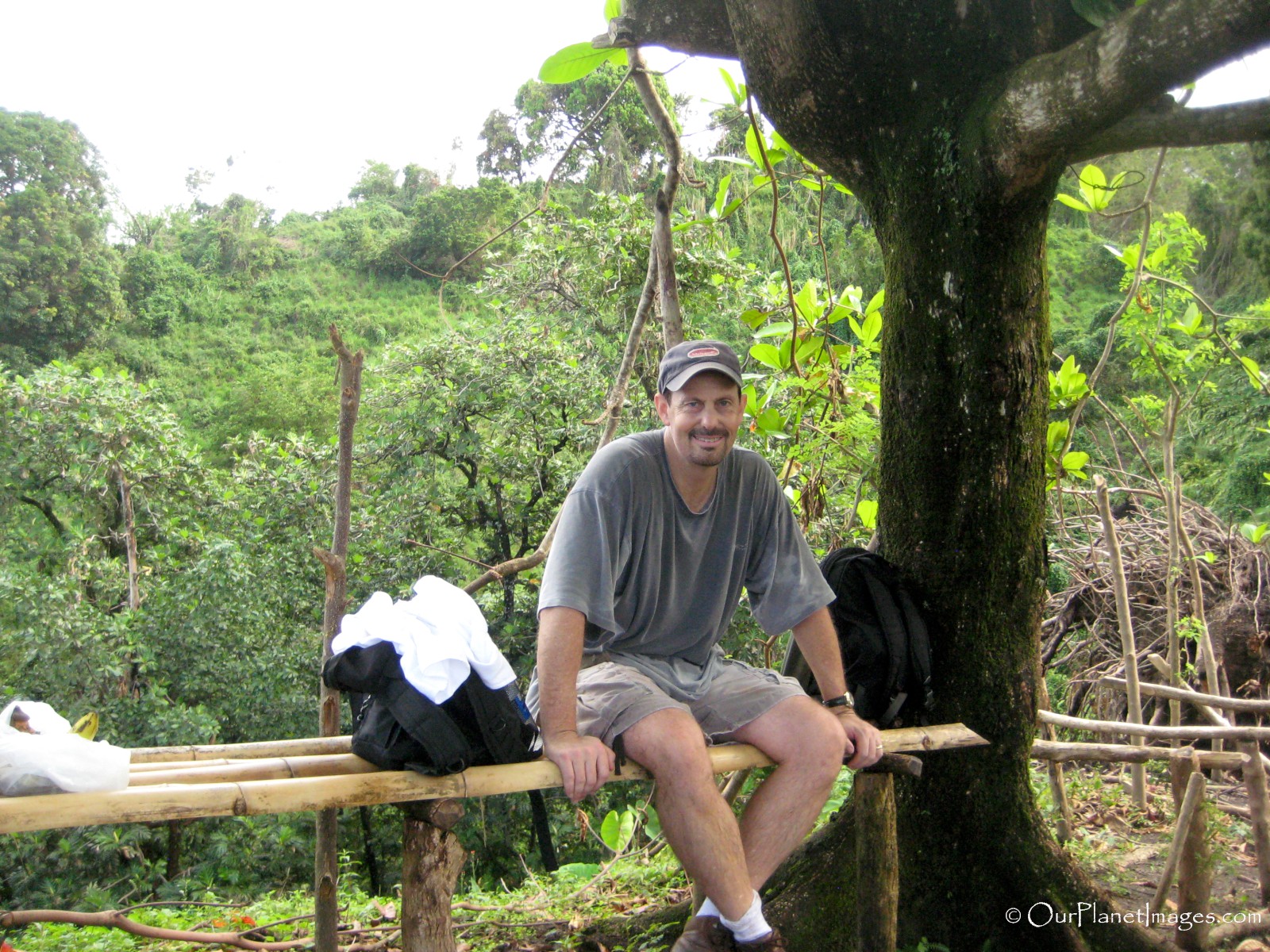
Trees across the trail
The bad news was that just after the half way point we can into an area where many trees were blocking the trail. Between the times when we booked our trip and we arrived at St. Vincent, the island had taken a direct hit from Hurricane Tomas. We had called ahead before leaving for St. Vincent and we were told that everything was fine and the hiking trail had been cleared but in reality, only the first half of the trail was cleared. The photo below is a small example of the tree damage that was laying across the trail to the top of the volcano.
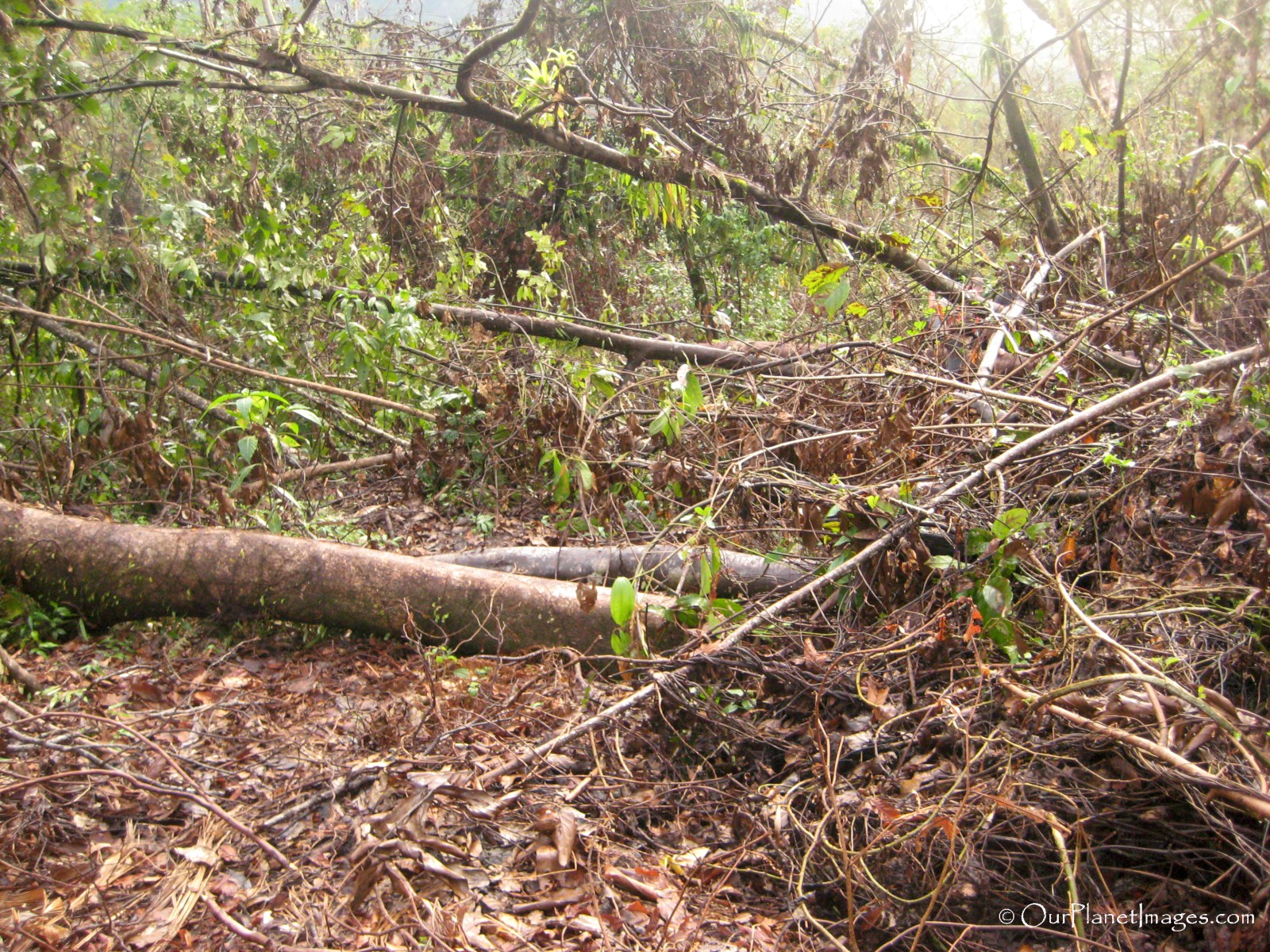
After traveling to St. Vincent with the primary purpose of seeing the La Soufriere Volcano Crater and making it near the top of the tree line we did not want to admit defeat so we decided to press forward and see if we could make it to the top.
Being from the Texas Gulf Coast and living through more hurricanes than I can remember, I have seen the destruction that hurricanes can cause. I have seen plenty of trees toppled across streets but I had never seen the damage that they have in heavily wooded tropical forests. Tree after tree laid across the trail. We crawled over trees, and under trees. Some trees were 24 inches in diameter. When we first started going across the fallen trees, I counted the number that we had crossed and I stopped counting them when I reached 200.
We finally reached the top of the tree line and the top of the volcano was in view with only a short distance to go. Our persistence had paid off and our reward was being the only people on top of an active volcano looking down into the steaming caldera, completely surrounded by some of the most beautiful scenery that I had ever seen in my life.
The down side was that it had taken us six hours to reach the top and we were worn out plus we knew that the hike back down would be just as difficult as the hike up.
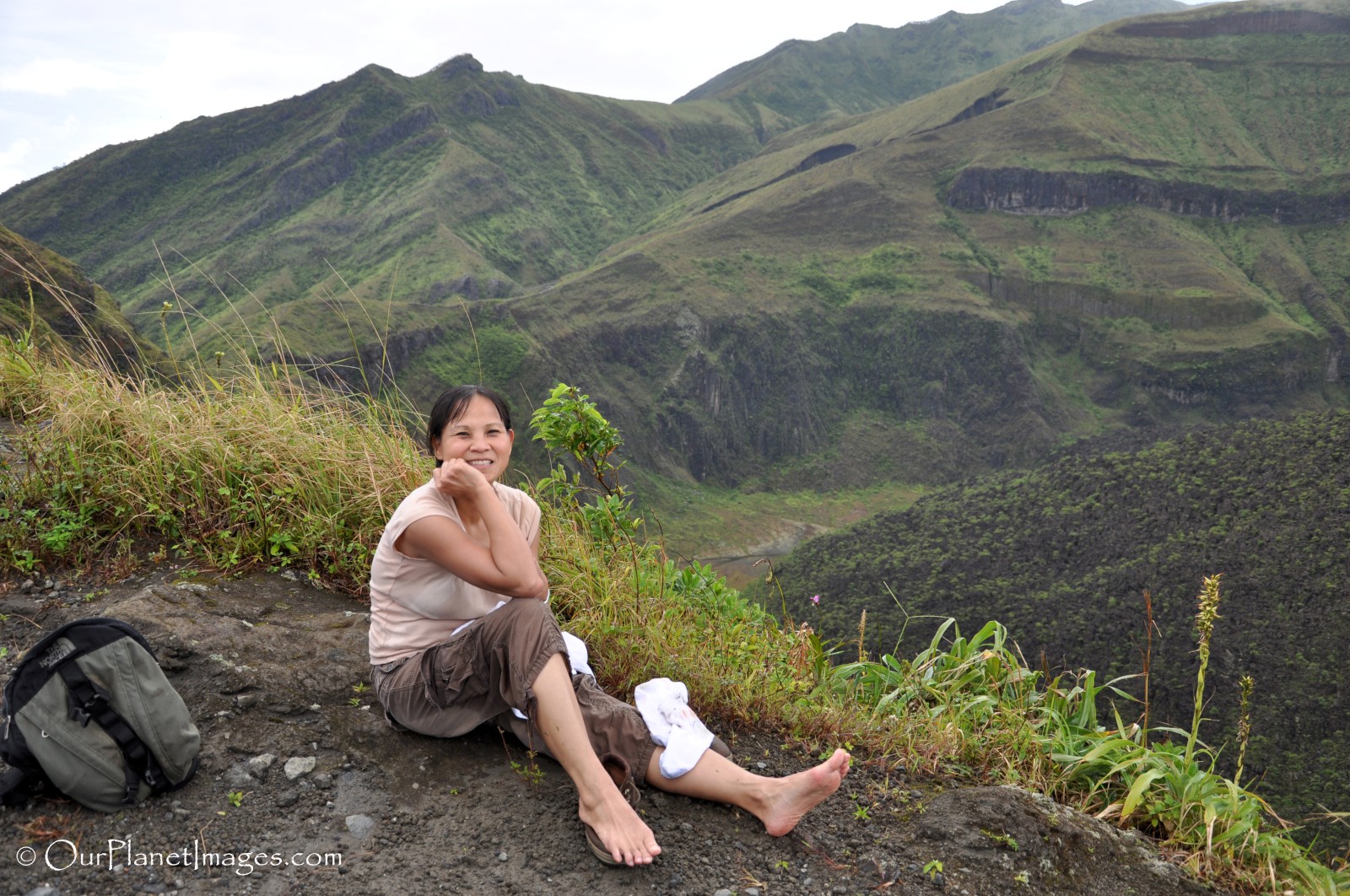
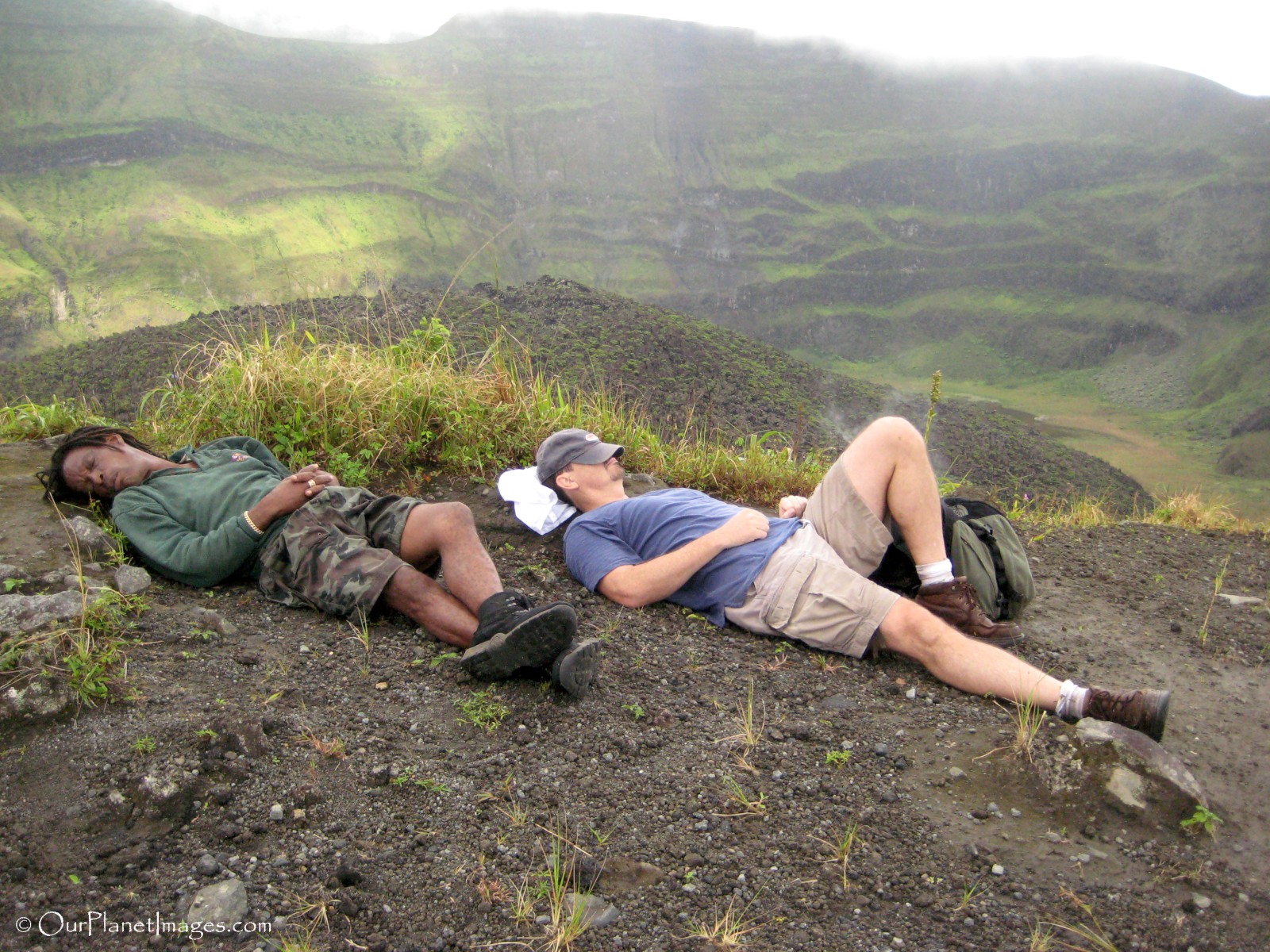
On top of the caldera
The hike up the volcano was grueling but the views at the top did not disappoint me. The top of the volcano crater was even more beautiful than it had looked in pictures. The views were stunning! The rugged crater rim covered with green grass was like nothing that I had seen before.

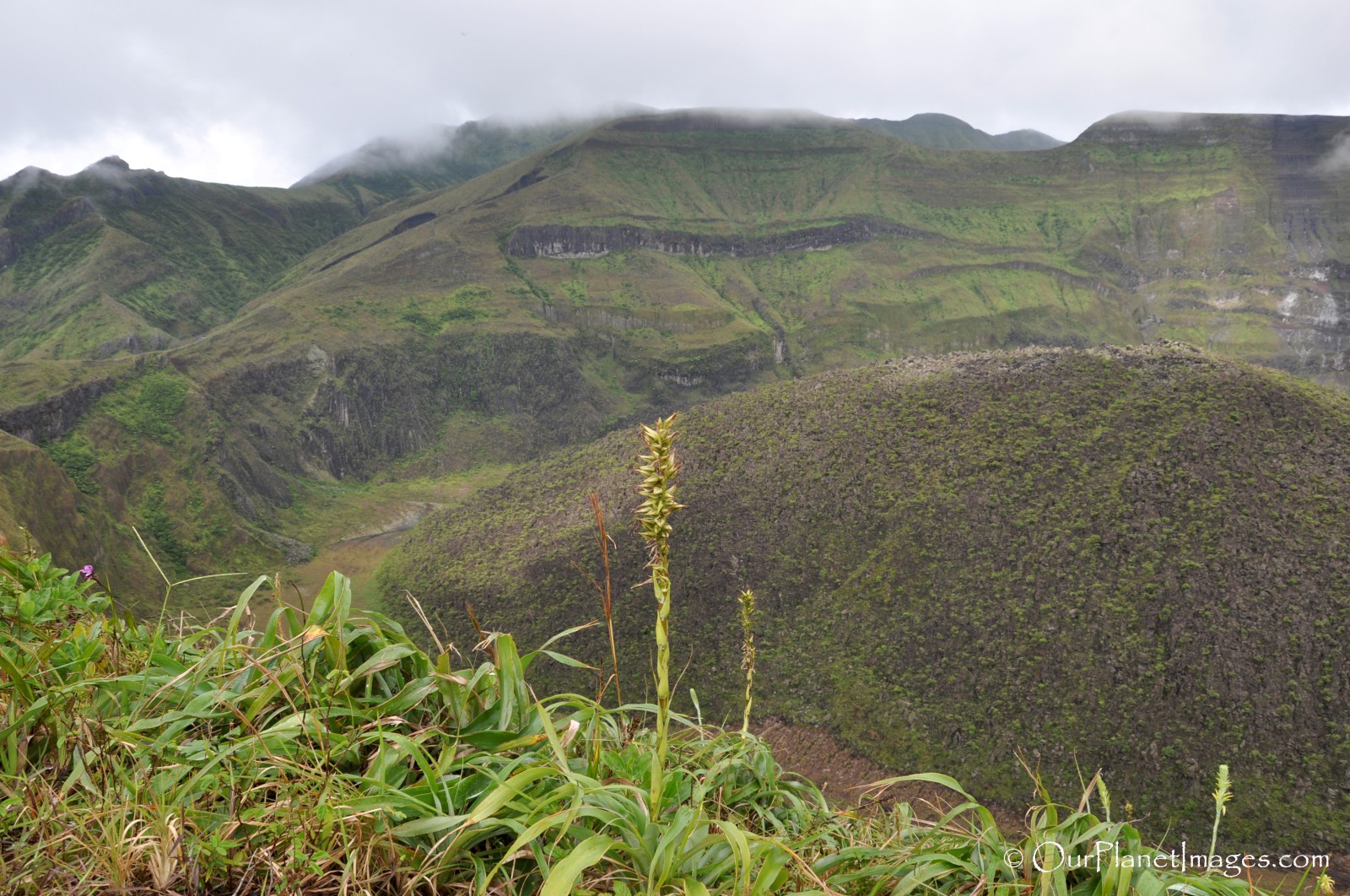
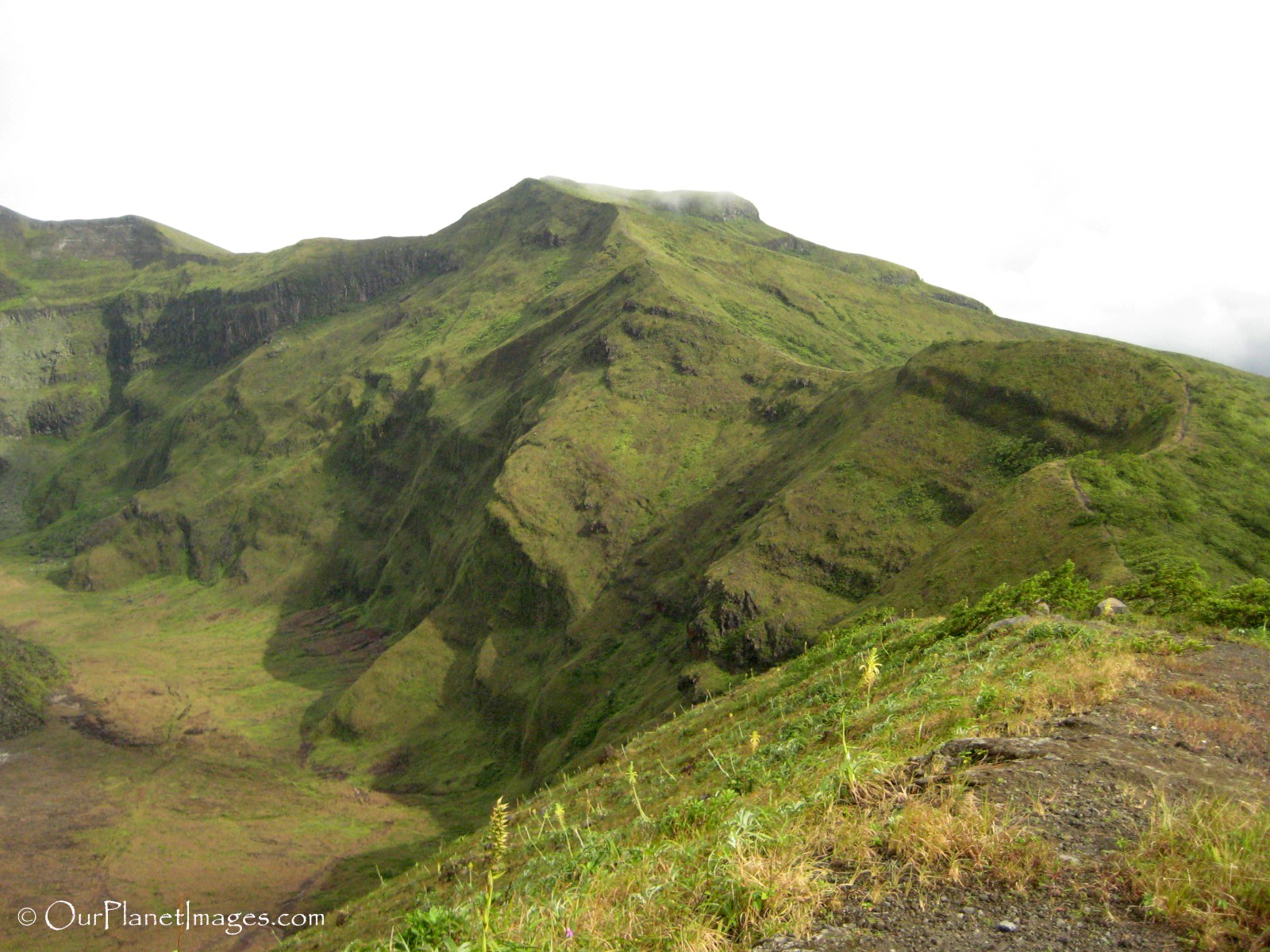
In the center of the caldera was a huge lave dome with steam oozing from the side. The size of the bulge in the center of the caldera was much bigger than I had anticipated. It was a little scary looking down into the caldera of a volcano and seeing steam venting out of the side of a massive bulge but it is one of those experiences that I now look back on and think how amazing it was to witness.
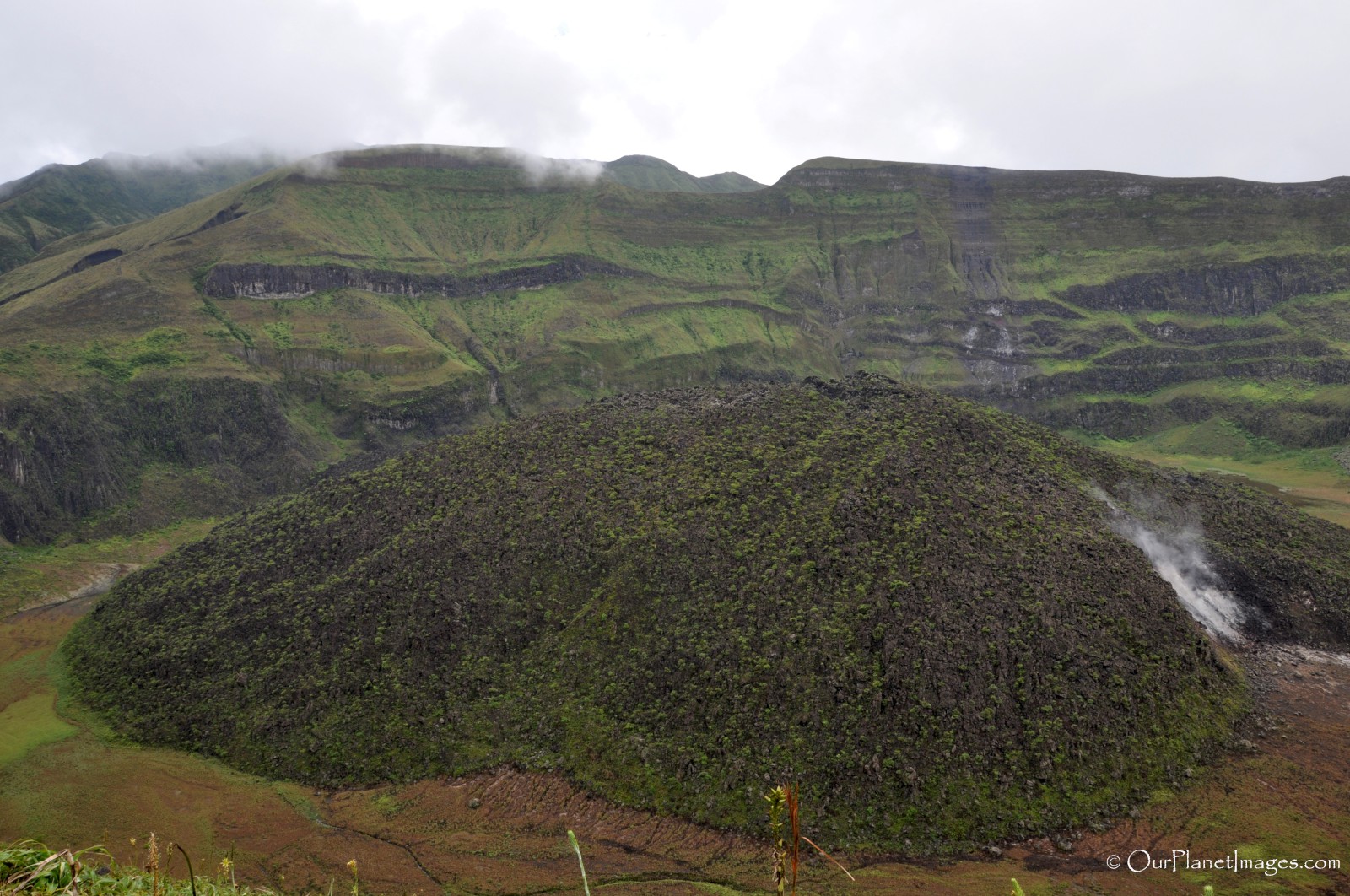
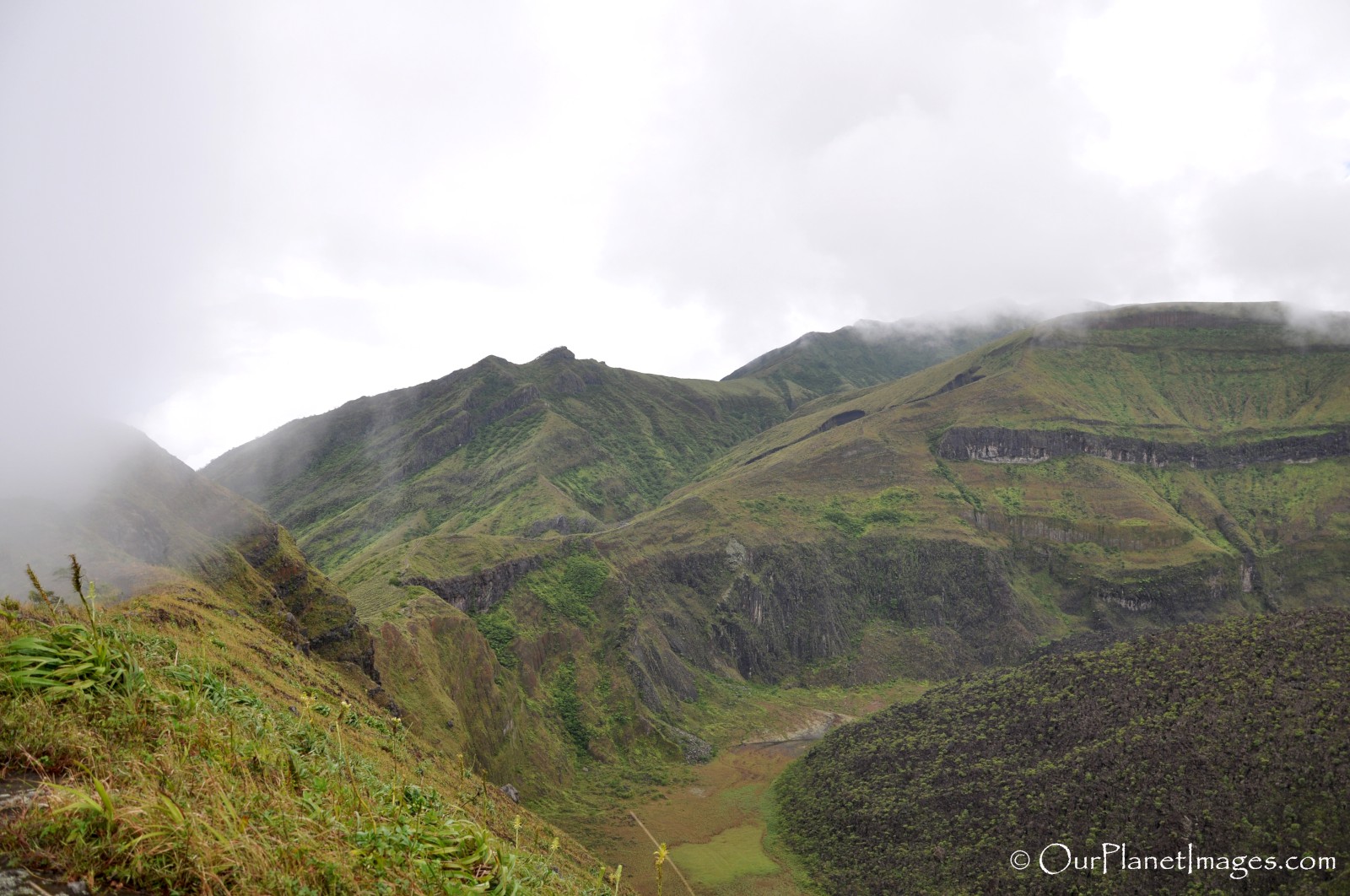


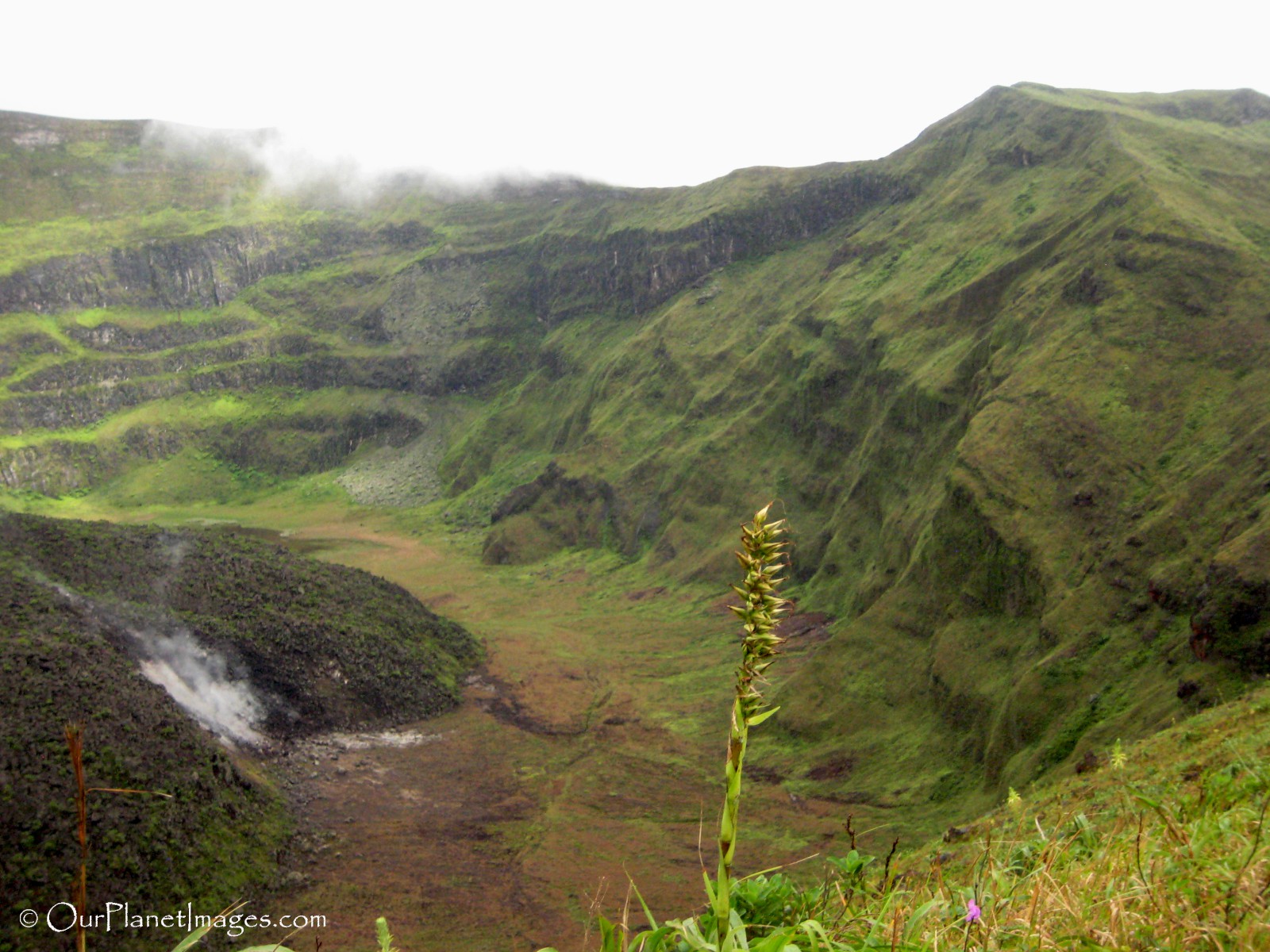
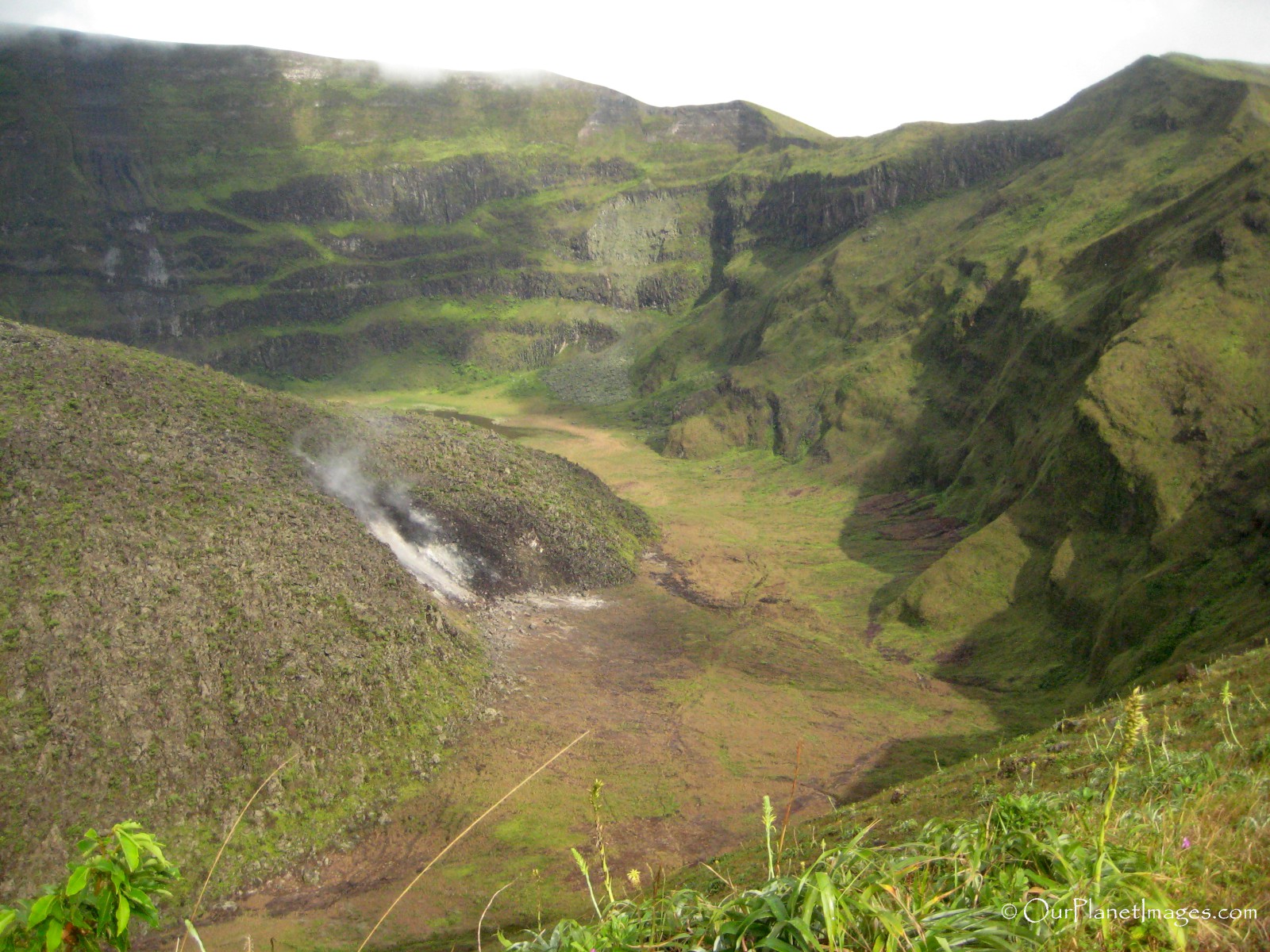
The scenery was so beautiful that it was difficult to turn my back on such an amazing sight but after soaking up as much of the environment as a could and getting some much needed rest there was no choice but to go back down the same way that we had come up. The almost two hours on top of La Soufriere had restored my energy level and we were ready to go again.
Descending back to the beach
Almost immediately after starting down, I slipped on some loose gravel and fell backwards landing on my backpack which was carrying my camera, completely destroying the camera.
The hike down was similar to going up but going down is always easier physically although the extra time required to navigate through the hurricane damaged forest meant that our expected six to seven hour hike was now going to take over thirteen hours and the last two hours would be in the dark.
Darkness in the jungle is not the same as it is in the city, dark in the jungle is near black. Not expecting to be hiking back in the dark, no one had brought a flash light but we did have our cell phones so we used the light of the cell phone to guide our steps and keep us from falling.
Once we emerged out of the slot canyon and made our way back to the beach we were met with cheers by the others staying at the base camp. While I never felt that we were in danger of injury, when hikers are significantly late from a potentially risky hike, people start to get worried!

Update status on La Soufriere Volcano
La Soufriere Volcano started volcanic activity on December 29, 2020 with lava flow coming out of the volcanic dome. An explosive eruption occurred on April 9, 2021 with an ash plume reaching approximately 32,000 feet and the eruptions continued until April 22, 2021.
The eruption lasted almost four months and significantly changed the looks of the volcano. The lava dome is gone, streams of lave flowed down the side of the volcano destroying much of the green vegetation and volcanic ash covered the entire volcano cone along with much of the island.
The photos that I have seen from after the eruption show a completely different volcano than I experienced. The most of the tropical jungle covering the volcano cone is now gone and has been replaced with desolate earth.
The earth is resilient and will recover from natural disasters but it will take some time for La Soufriere Volcano to recover back to the way it looked in the photos from this post.
The Dust on My Shoes
I have always been drawn to beautiful nature in all of its forms. I love being on the ocean, hiking in the mountains, exploring in cave, enjoying beautiful waterfalls and marveling at unusual rock formations.
When I saw photos of the La Soufriere Volcano crater, the desire to experience such a beautiful place was irresistible. I put experiencing the volcano at the top of my list of places to see and immediately traveled to see it.
Unfortunately a hurricane struck the island before I had a chance to make my trip but I didn’t let the hurricane damaged forest stop me from reaching the top of the crater and experiencing one of the most beautiful places that I have seen in my travels.
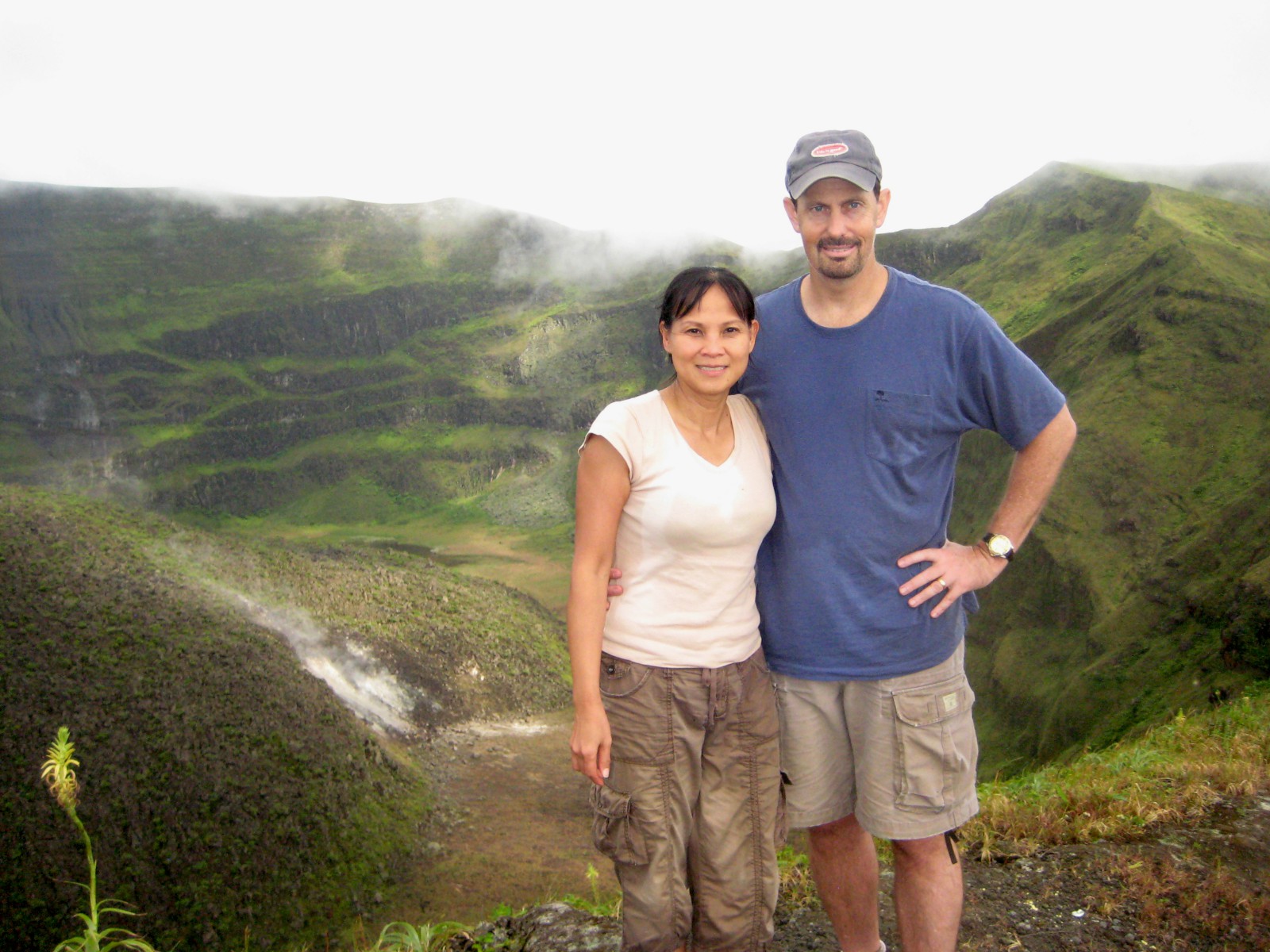
It is unfortunate that the volcano erupted causing massive damage to the surrounding nature and changing many people’s lives on the island. Nature is extremely powerful causing damage in many places every year.
The world is in a constant state of change and the places we experience today may not be the same in the future. Sometime changes that nature causes today will actually create amazing places that people in the future will enjoy.
Don’t hesitate to see the places that you desire to experience because they may change with very little notice.
If places do change after you have seen them, then you have the satisfaction of knowing that you saw something very special before it went away.

